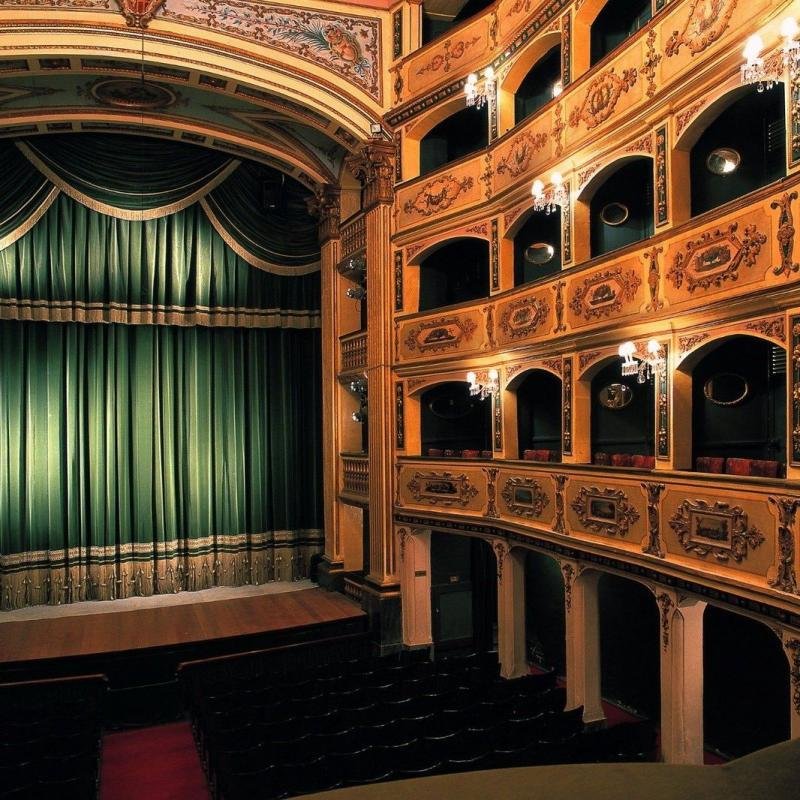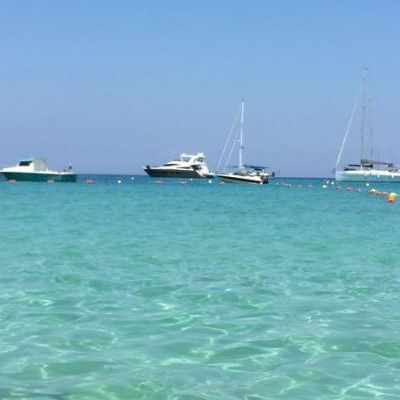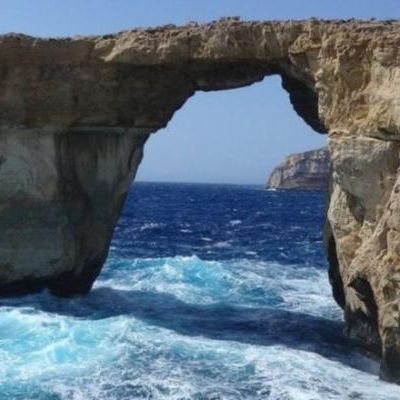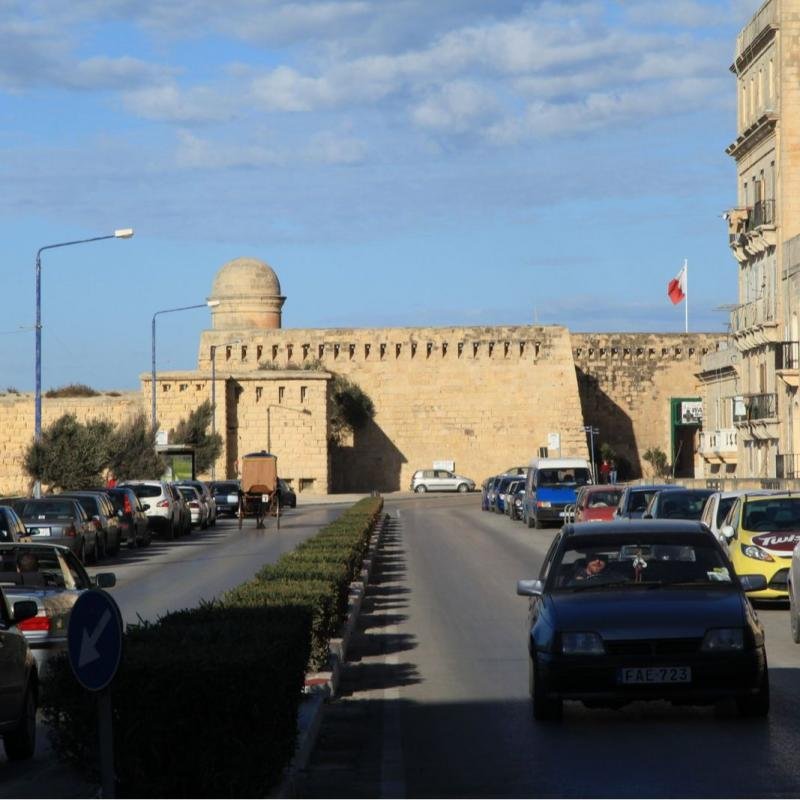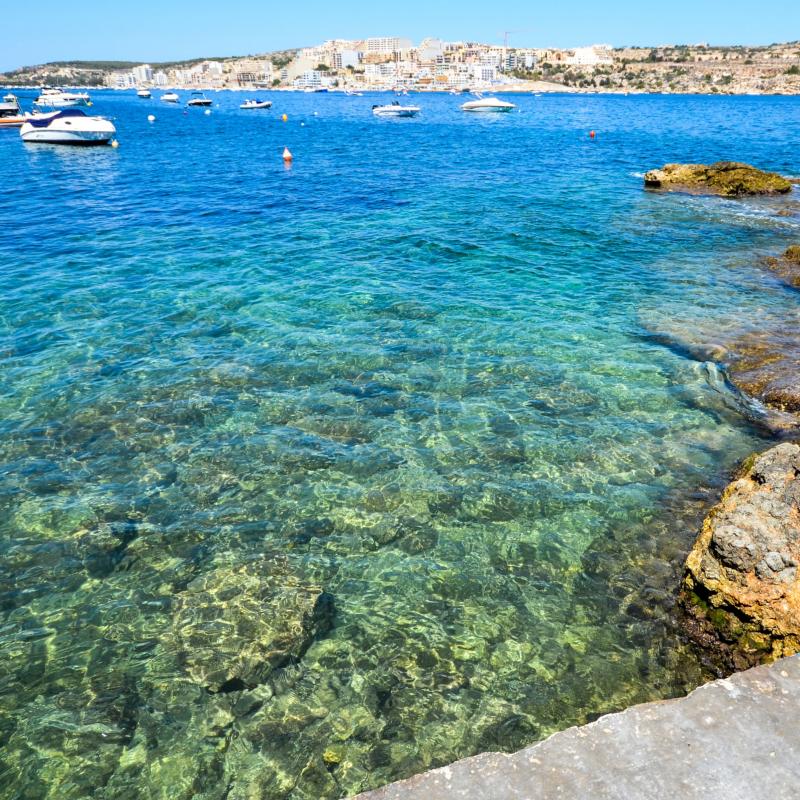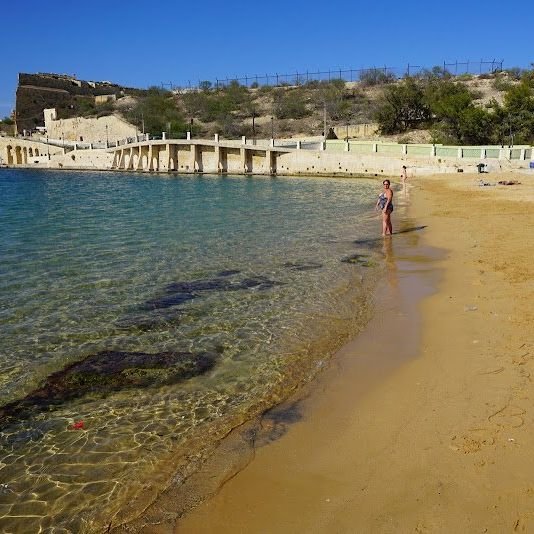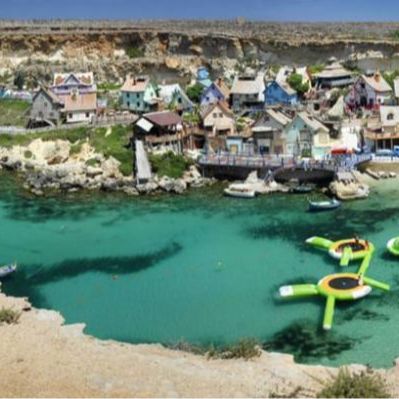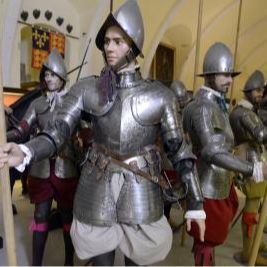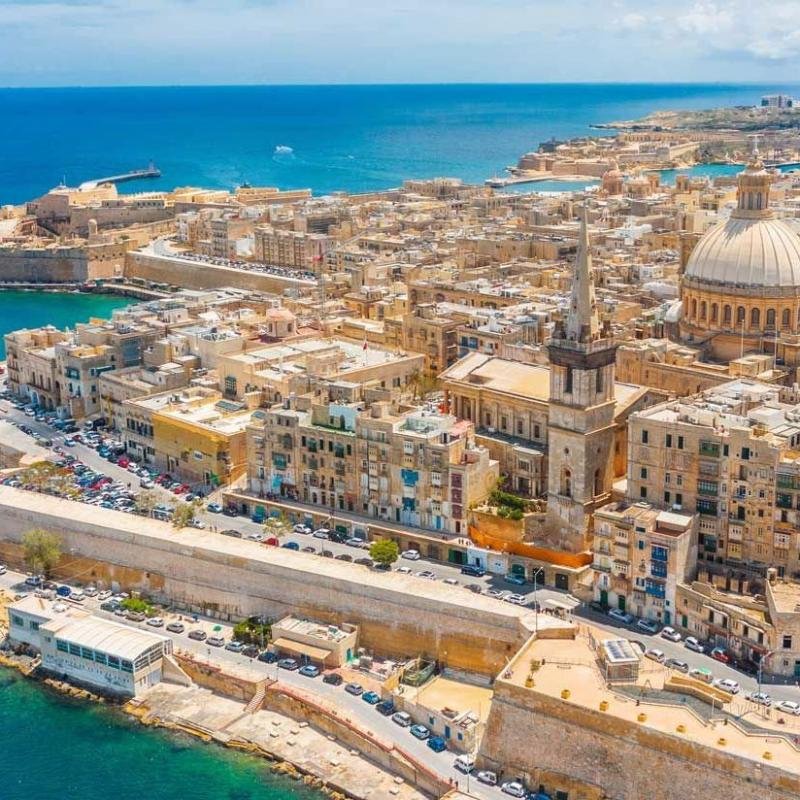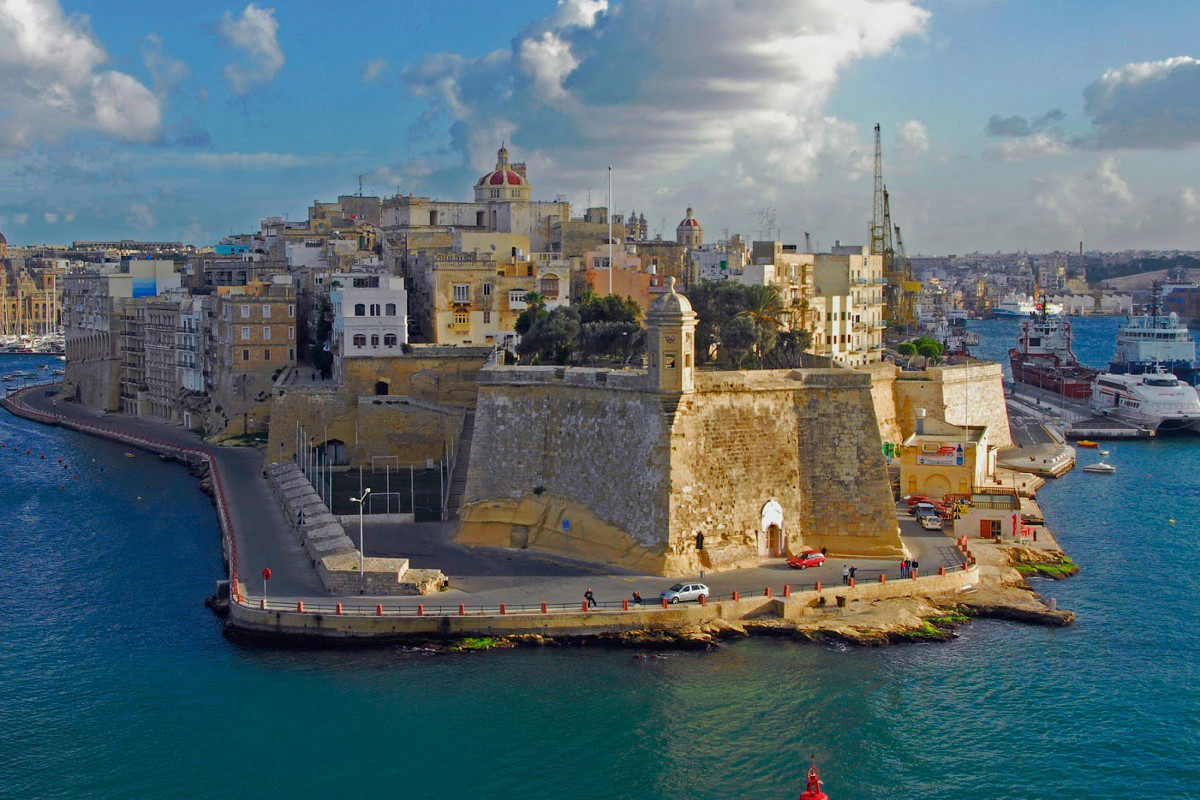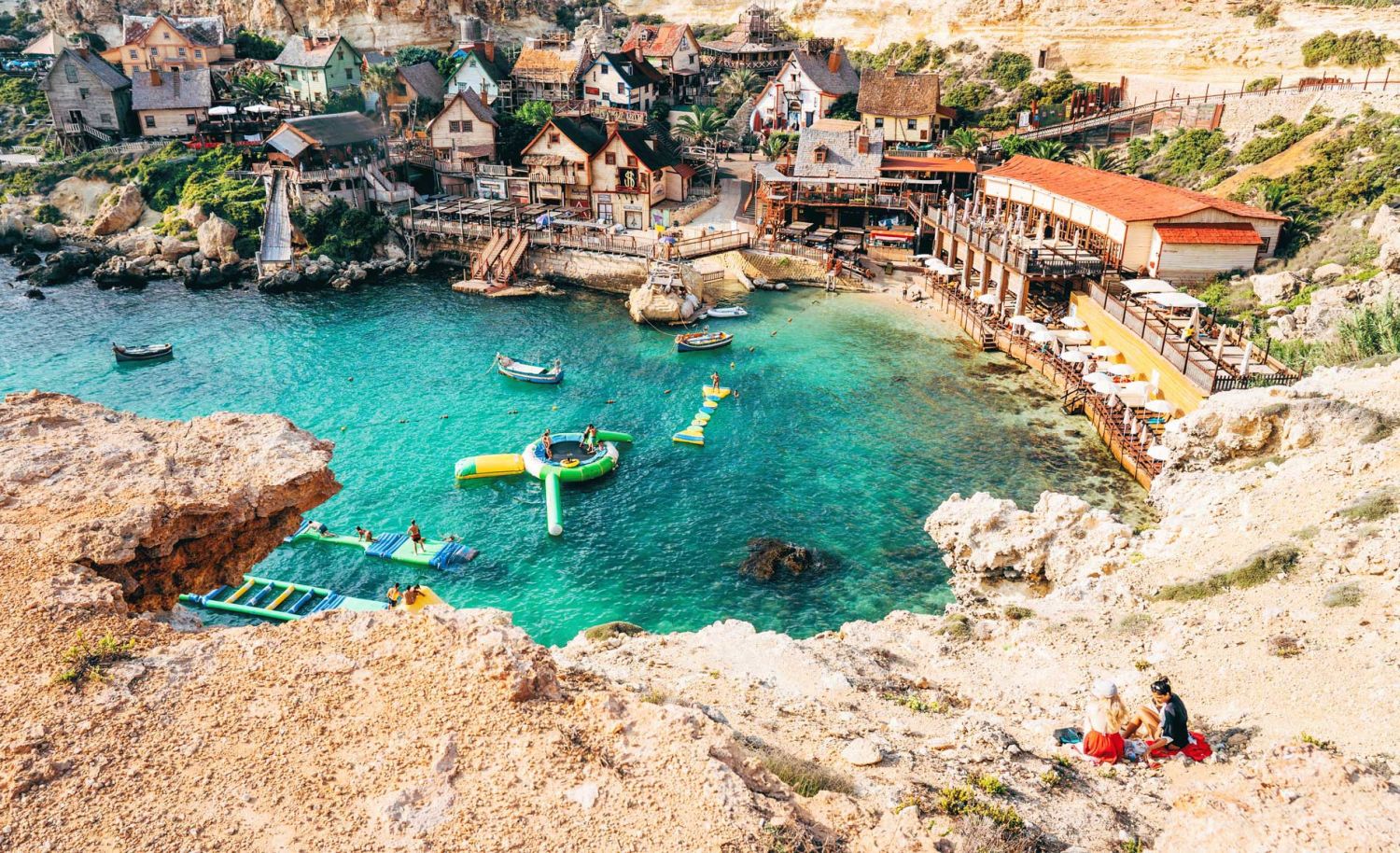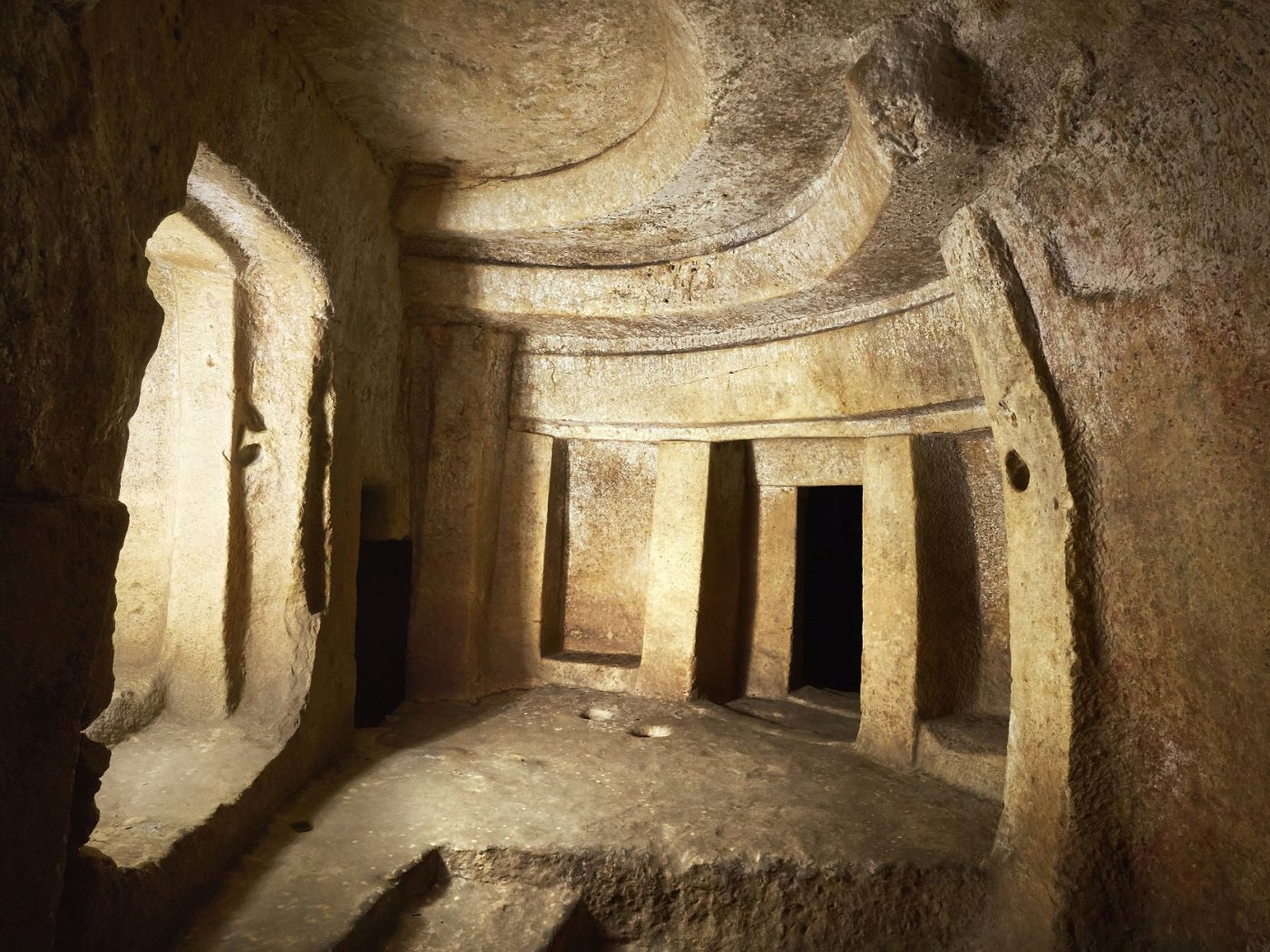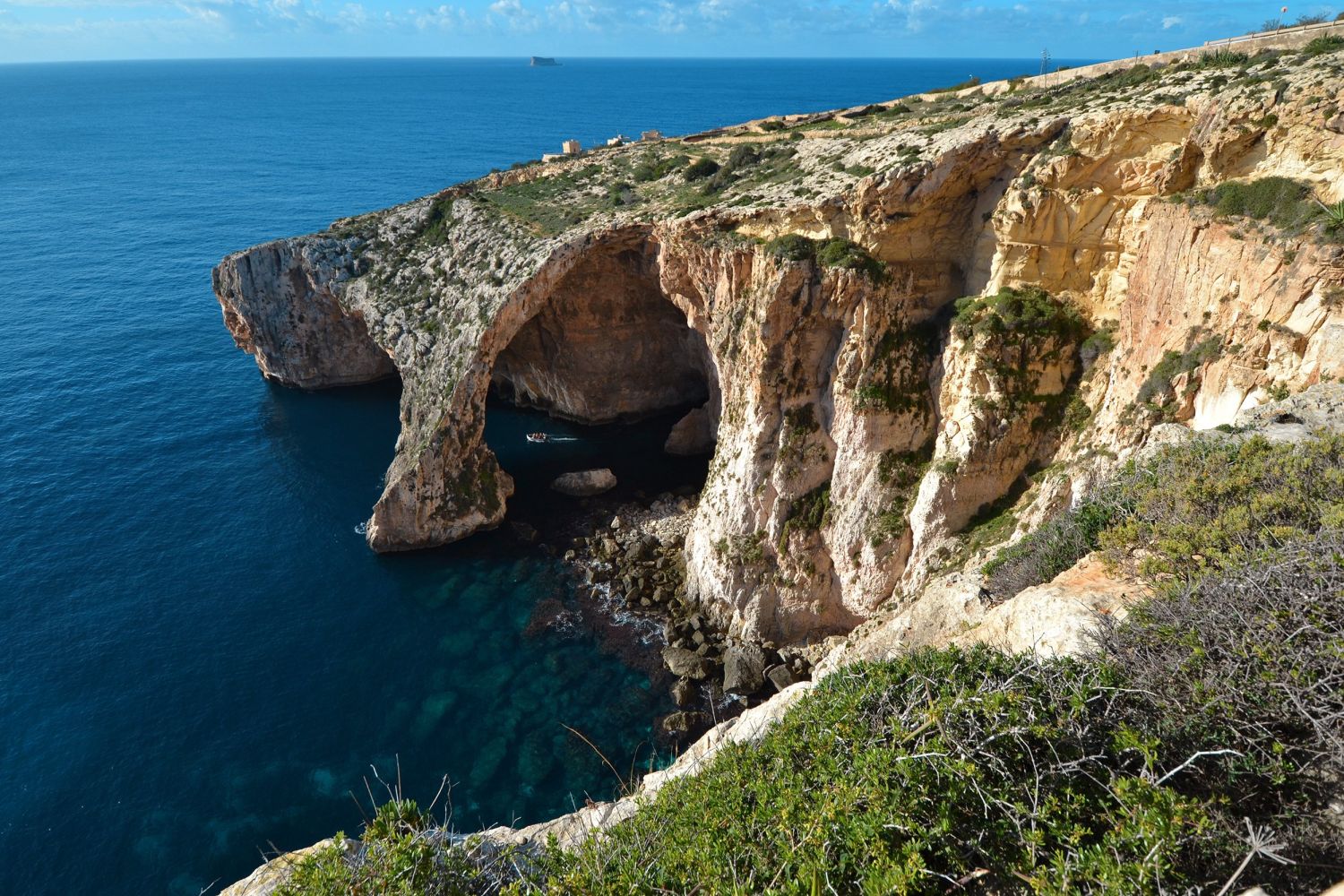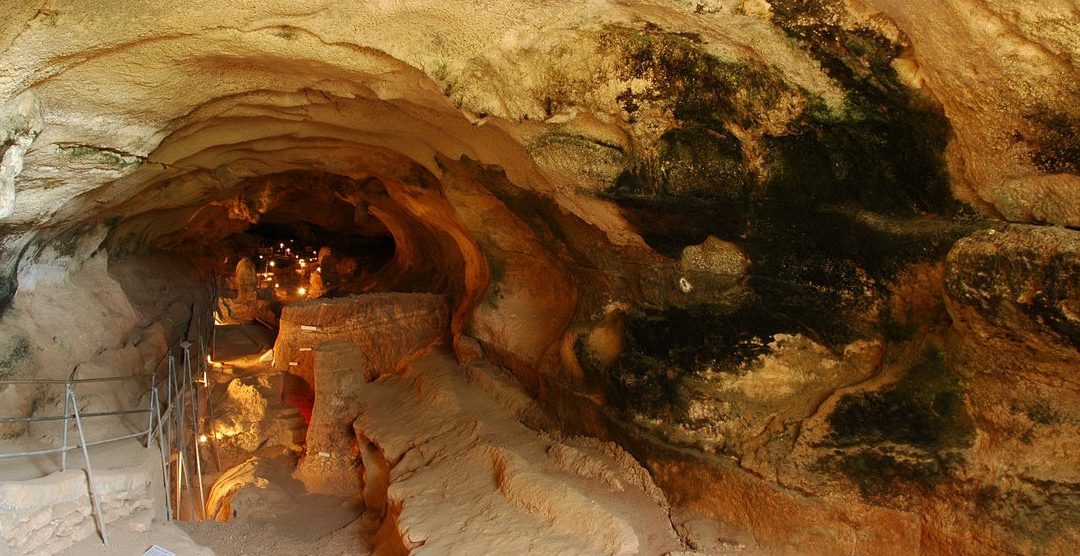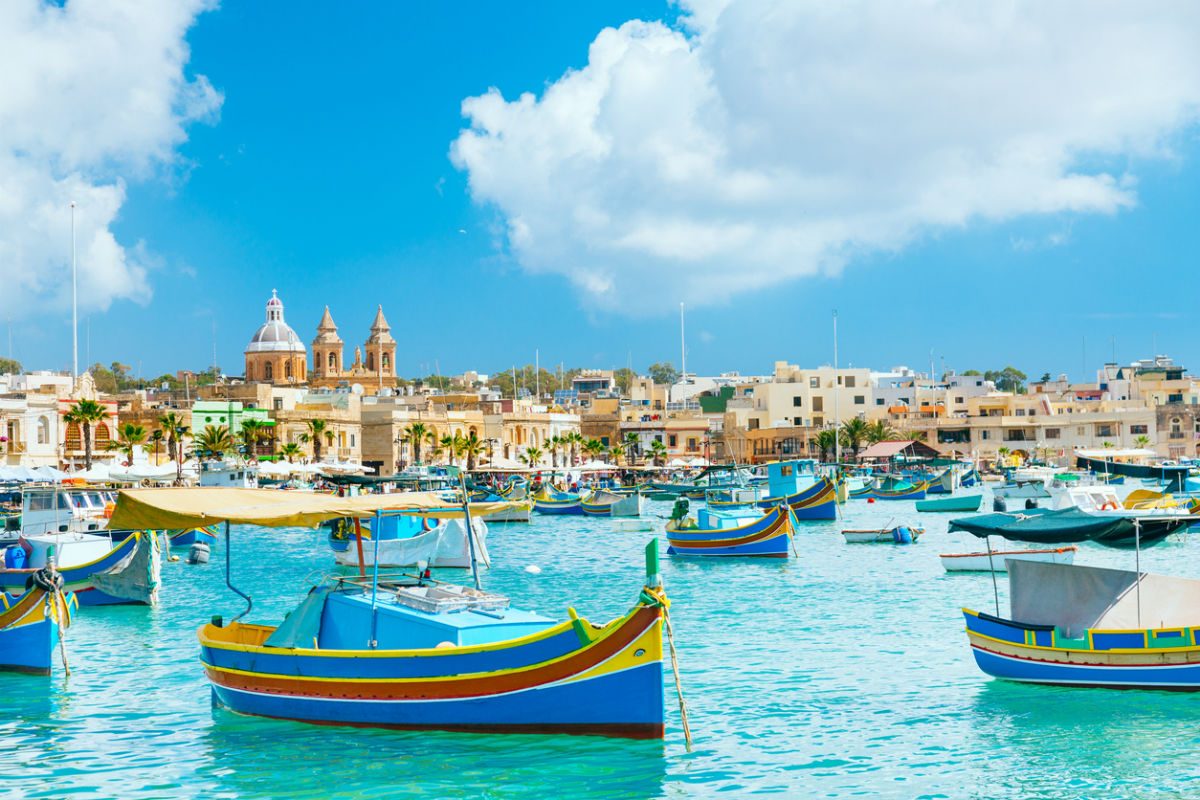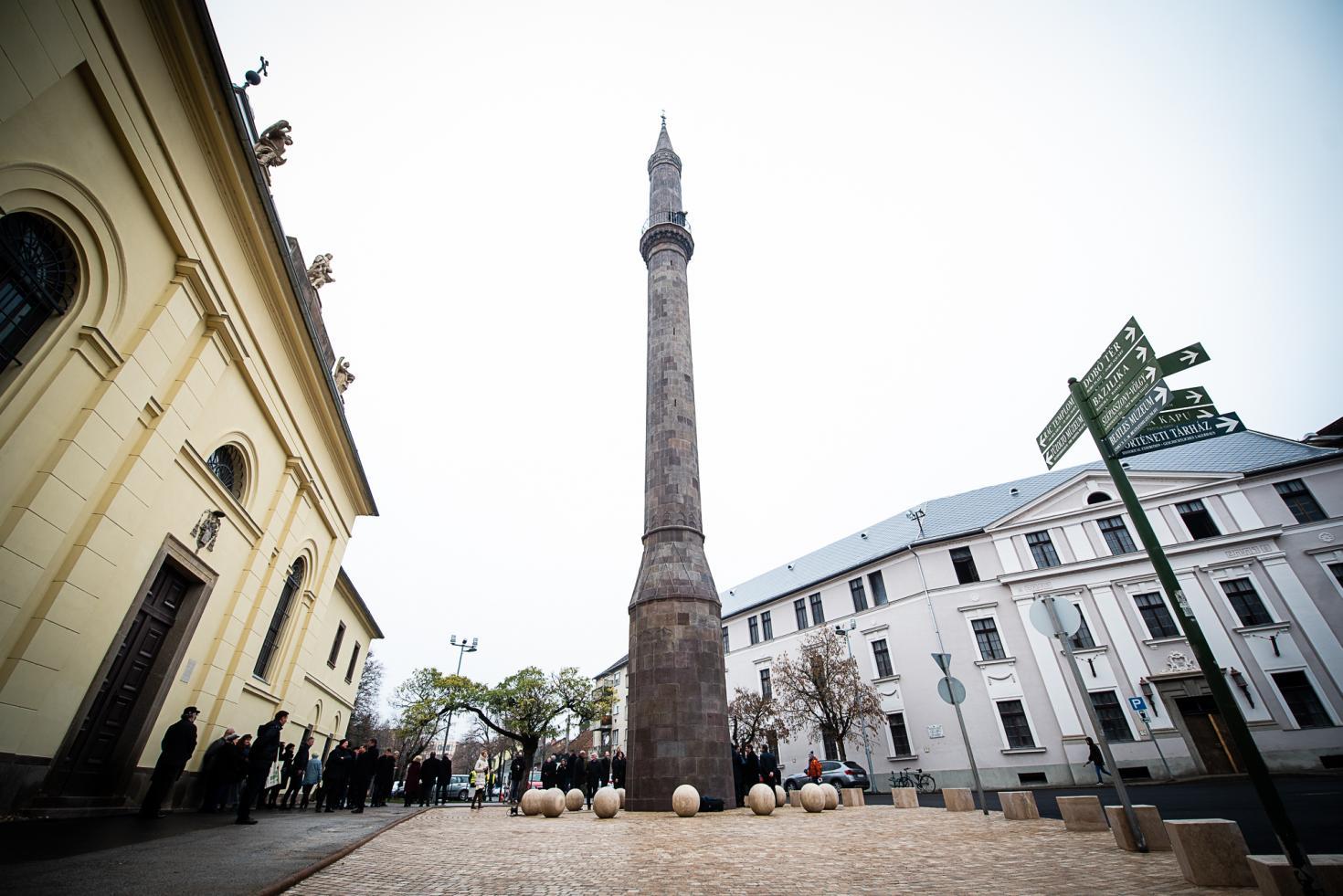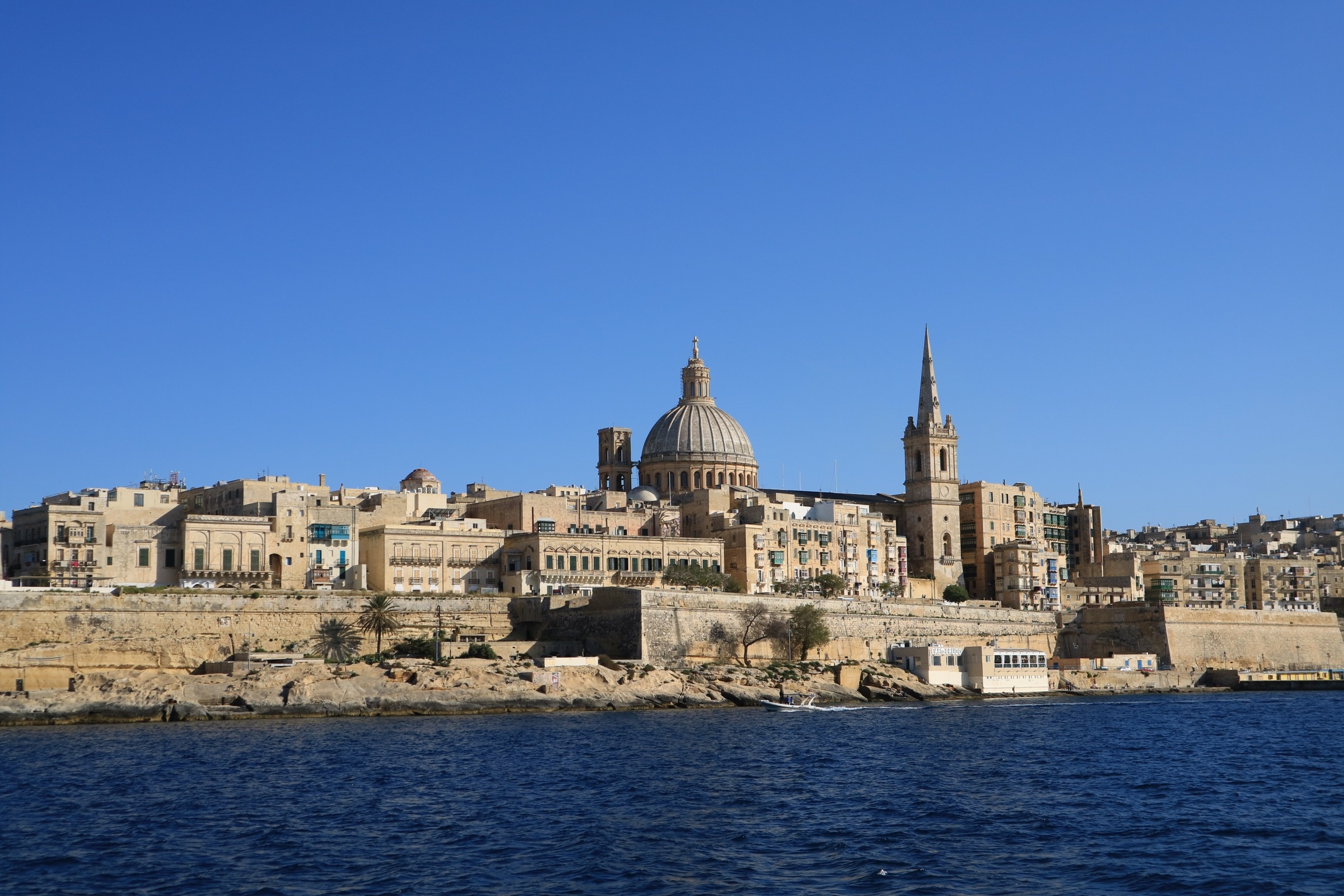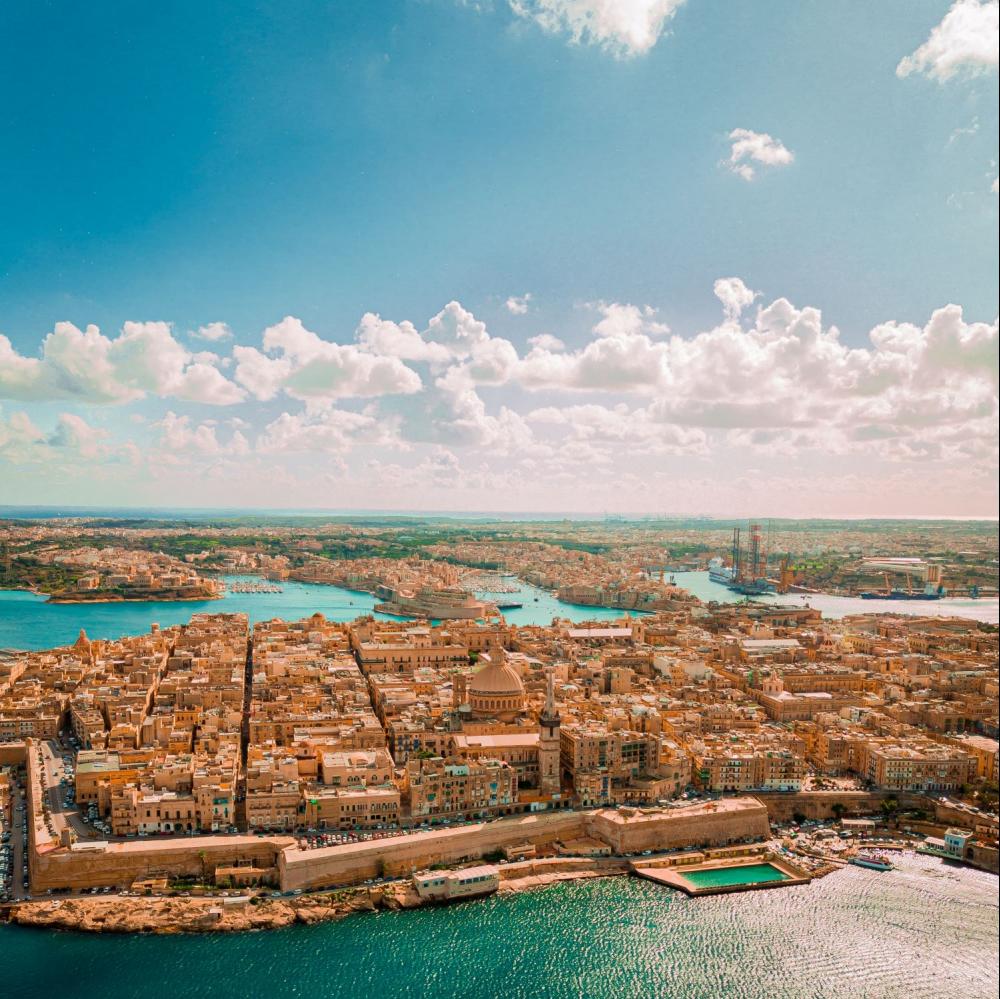Malta Island
 Malta is a Southern European island country consisting of an archipelago in the Mediterranean Sea. It lies 80 km (50 mi) south of Italy, 284 km (176 mi) east of Tunisia, and 333 km (207 mi) north of Libya.
Malta is a Southern European island country consisting of an archipelago in the Mediterranean Sea. It lies 80 km (50 mi) south of Italy, 284 km (176 mi) east of Tunisia, and 333 km (207 mi) north of Libya.With a population of about 475,000[4] over an area of 316 km2 (122 sq mi),
Malta is the world's tenth smallest and fifth most densely populated country. Its capital is Valletta, which is the smallest national capital in the European Union by area at 0.8 km.2 The official languages are Maltese and English, with Maltese officially recognised as the national language and the only Semitic language in the European Union. Malta has been inhabited since approximately 5900 BC. Its location in the centre of the Mediterranean has historically given it great strategic importance as a naval base, with a succession of powers having contested and ruled the islands, including the Phoenicians and Carthaginians, Romans, Greeks, Arabs, Normans, Aragonese, Knights of St. John, French, and British.
Most of these foreign influences have left some sort of mark on the country's ancient culture. Malta became a British colony in 1815, serving as a way station for ships and the headquarters for the British Mediterranean Fleet. It played an important role in the Allied war effort during the Second World War, and was subsequently awarded the George Cross for its bravery in the face of an Axis siege, and the George Cross appears on Malta's national flag.
The British Parliament passed the Malta Independence Act in 1964, giving Malta independence from the United Kingdom as the State of Malta, with Queen Elizabeth II as its head of state and queen. The country became a republic in 1974. It has been a member state of the Commonwealth of Nations and the United Nations since independence, and joined the European Union in 2004; it became part of the eurozone monetary union in 2008.
(Wikipedia)
The Manoel Theatre, or Teatru Manoel as it is known in Maltese, is an architectural gem.
The National War Museum, housed within the fortified walls of Fort St. Elmo, houses a superb collection of artefacts. Displayed in a chronological manner, these artefacts narrate the military…
Anchor Bay is one of the most popular beaches in Malta, mostly famous as a diving site and for Popeye Village
The Palace Armoury is one of the world’s greatest arms collections housed in their original buildings, with the most visible and tangible symbols of the past glories of the Sovereign…
Valletta, The Fortress City, Citta' Umilissima, "a city built by gentlemen for gentlemen" is Malta's capital city: a living, working city, the administrative and commercial heart of the Islands.
Marsaxlokk
Marsaxlokk is a small, traditional fishing village in the South Eastern Region of Malta. It has a harbour, and is a tourist attraction notable for its picturesque views, its fishermen and history. As at March 2014, the village had a population of 3,534. The village is also known for the Marsaxlokk Market, which is mainly a large fish market which takes place along the seafront on Sundays, and a tourist market during all other days of the week. Inhabited and well-known since antiquity, Marsaxlokk was used as a port by Phoenicians, Carthaginians and also has the remains of a Roman-era harbour.
Originally a part of the city of Żejtun, the fishing village became a separate parish in the late nineteenth century. Traditional luzzi and other larger and more modern vessels line the sheltered inner harbour. The village is also popular among locals and tourists alike for its peaceful walks around the coast and harbour, its many restaurants, as well as for its secluded and untainted swimming zones. Marsaxlokk Bay also includes a container freeport towards Birżebbuġa, a power station complex towards Delimara, and a small ship-repair facility for fishermen. Marsaxlokk is sometimes referred to as Portus Herculis, due to the association of Marsaxlokk Bay with the Roman and Punic remains at Tas-Silġ.
(Wikipedia)
Originally a part of the city of Żejtun, the fishing village became a separate parish in the late nineteenth century. Traditional luzzi and other larger and more modern vessels line the sheltered inner harbour. The village is also popular among locals and tourists alike for its peaceful walks around the coast and harbour, its many restaurants, as well as for its secluded and untainted swimming zones. Marsaxlokk Bay also includes a container freeport towards Birżebbuġa, a power station complex towards Delimara, and a small ship-repair facility for fishermen. Marsaxlokk is sometimes referred to as Portus Herculis, due to the association of Marsaxlokk Bay with the Roman and Punic remains at Tas-Silġ.
(Wikipedia)
Mdina
Mdina is a fortified city in the Northern Region of Malta, which served as the island's capital from antiquity to the medieval period. The city is still confined within its walls, and has a population of just under 300, but it is contiguous with the town of Rabat, which takes its name from the Arabic word for suburb, and has a population of over 11,000 (as of March 2014). The city was founded as Maleth in around the 8th century BC by Phoenician settlers, and was later renamed Melite by the Romans.
Ancient Melite was larger than present-day Mdina, and it was reduced to its present size during the Byzantine or Arab occupation of Malta. During the latter period, the city adopted its present name, which derives from the Arabic word medina. The city remained the capital of Malta throughout the Middle Ages, until the arrival of the Order of St. John in 1530, when Birgu became the administrative centre of the island. Mdina experienced a period of decline over the following centuries, although it saw a revival in the early 18th century.
At this point, it acquired several Baroque features, although it did not lose its medieval character. Mdina remained the centre of the Maltese nobility and religious authorities (and property continues to largely be passed down from families and from generation to generation), but it never regained its pre-1530 importance, giving rise to the popular nickname the "Silent City" by both locals and visitors. Mdina is on the tentative list of UNESCO World Heritage Sites, and it is now one of the main tourist attractions in Malta.
Ancient Melite was larger than present-day Mdina, and it was reduced to its present size during the Byzantine or Arab occupation of Malta. During the latter period, the city adopted its present name, which derives from the Arabic word medina. The city remained the capital of Malta throughout the Middle Ages, until the arrival of the Order of St. John in 1530, when Birgu became the administrative centre of the island. Mdina experienced a period of decline over the following centuries, although it saw a revival in the early 18th century.
At this point, it acquired several Baroque features, although it did not lose its medieval character. Mdina remained the centre of the Maltese nobility and religious authorities (and property continues to largely be passed down from families and from generation to generation), but it never regained its pre-1530 importance, giving rise to the popular nickname the "Silent City" by both locals and visitors. Mdina is on the tentative list of UNESCO World Heritage Sites, and it is now one of the main tourist attractions in Malta.
Sliema
Sliema is a town located on the northeast coast of Malta in the Northern Harbour District. It is a major residential and commercial area and a centre for shopping, dining, and café life. Lining the coastline is a promenade known as the Sliema Front, that has become the ideal spot for joggers and walkers as well as a prolific meeting place for locals during the summer season. Romantic moon strolls, barbeques and open air restaurants Tattoo and Piercing and cafes have made Sliema the hub of social nightlife. Sliema is also known for its numerous rocky beaches, water sports and hotels. Sliema, which means 'peace, comfort', was once a quiet fishing village on the peninsula across Marsamxett Harbour from Valletta and has views of the capital city.
The population began to grow in 1853 and the town was declared a parish in 1878. Now Sliema and the coastline up to neighbouring St. Julian's constitutes Malta's main coastal resort. Sliema is considered a desirable place to live and is relatively affluent, with extremely high property prices compared to the national average. Historically, stylish villas and traditional Maltese townhouses lined the streets of Sliema. Sliema has now been ringed with modern apartment blocks, some of which are amongst the tallest buildings in Malta. This has resulted in significant traffic, parking and construction-related noise pollution issues.
(Wikipedia)
The population began to grow in 1853 and the town was declared a parish in 1878. Now Sliema and the coastline up to neighbouring St. Julian's constitutes Malta's main coastal resort. Sliema is considered a desirable place to live and is relatively affluent, with extremely high property prices compared to the national average. Historically, stylish villas and traditional Maltese townhouses lined the streets of Sliema. Sliema has now been ringed with modern apartment blocks, some of which are amongst the tallest buildings in Malta. This has resulted in significant traffic, parking and construction-related noise pollution issues.
(Wikipedia)
St. Julian's
Saint Julian's (Maltese: San Ġiljan) is a town in the Central Region of Malta. It is situated along the coast, north of the country's capital, Valletta. It is known for tourism-oriented businesses, such as hotels, restaurants and nightclubs which are centred mainly in an area known as Paceville. The town is named after its patron saint; Saint Julian who is widely known as Julian the Hospitaller and Julian the Poor whereby he is the patron Saint of hunters. Before the reform to the Calendar of Saints, the memorial to St Julian was on 27 January. Nowadays, it is celebrated on 12 February, although in Malta an additional feast, in the spirit of the many summer feasts around the island, is celebrated on the last Sunday of August.
(Wikipedia)
(Wikipedia)
Valletta
Valletta is the capital city of Malta. Located in the south east of the island, between Marsamxett Harbour to the west and the Grand Harbour to the east, its population in 2014 was 6,444, while the metropolitan area around it has a population of 393,938. Valletta is the southernmost capital of Europe. Valletta's 16th century buildings were constructed by the Knights Hospitaller.

The city is Baroque in character, with elements of Mannerist, Neo-Classical and Modern architecture, though the Second World War left major scars on the city, particularly the destruction of the Royal Opera House.
The city was officially recognised as a World Heritage Site by UNESCO in 1980. The city's fortifications, consisting of bastions, curtains and cavaliers, along with the beauty of its Baroque palaces, gardens and churches, led the ruling houses of Europe to give the city its nickname Superbissima— Italian for Most Proud.
(Wikipedia)

The city is Baroque in character, with elements of Mannerist, Neo-Classical and Modern architecture, though the Second World War left major scars on the city, particularly the destruction of the Royal Opera House.
The city was officially recognised as a World Heritage Site by UNESCO in 1980. The city's fortifications, consisting of bastions, curtains and cavaliers, along with the beauty of its Baroque palaces, gardens and churches, led the ruling houses of Europe to give the city its nickname Superbissima— Italian for Most Proud.
(Wikipedia)
Birgu
Birgu (Maltese: Il-Birgu, Italian: Vittoriosa), also known by its title Città Vittoriosa ("Victorious City"), is an old fortified city on the south side of the Grand Harbour in the South Eastern Region of Malta. The city occupies a promontory of land with Fort Saint Angelo at its head and the city of Cospicua at its base. Birgu is ideally situated for safe anchorage, and over time it has developed a very long history with maritime, mercantile and military activities.
Birgu is a very old locality with its origins reaching back to medieval times. Prior to the establishment of Valletta as capital and main city of Malta, military powers that wanted to rule the Maltese islands would need to obtain control of Birgu due to its significant position in the Grand Harbour. In fact, it served as the base of the Order of Saint John and de facto capital city of Malta from 1530 to 1571. Birgu is well known for its vital role in the Great Siege of Malta of 1565.
In the early 20th century, Birgu had a population of over 6000 people. Over the years this decreased, and the population stood at 2,629 in March 2014.
(Wikipedia)

Birgu (Maltese: Il-Birgu, Italian: Vittoriosa), also known by its title Città Vittoriosa ("Victorious City"), is an old fortified city on the south side of the Grand Harbour in the South Eastern Region of Malta. The city occupies a promontory of land with Fort Saint Angelo at its head and the city of Cospicua at its base. Birgu is ideally situated for safe anchorage, and over time it has developed a very long history with maritime, mercantile and military activities.
Birgu is a very old locality with its origins reaching back to medieval times. Prior to the establishment of Valletta as capital and main city of Malta, military powers that wanted to rule the Maltese islands would need to obtain control of Birgu due to its significant position in the Grand Harbour. In fact, it served as the base of the Order of Saint John and de facto capital city of Malta from 1530 to 1571. Birgu is well known for its vital role in the Great Siege of Malta of 1565.
In the early 20th century, Birgu had a population of over 6000 people. Over the years this decreased, and the population stood at 2,629 in March 2014.
(Wikipedia)





